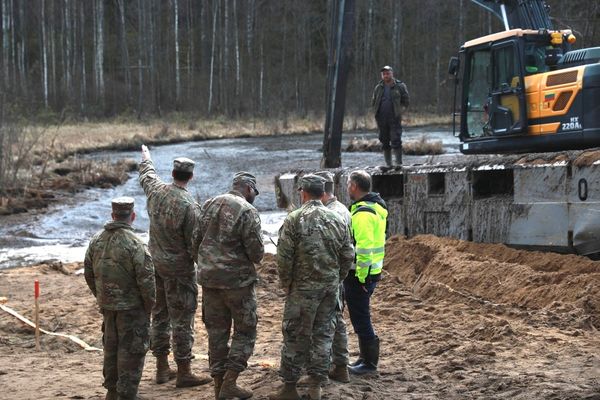
Much has been written about the potential consequences of getting rid of the Department of Education, one of President-elect Donald Trump’s campaign promises.
Little of the discussion that we’ve seen has focused on the impact on rural schools, which often depend more than urban ones on federal funding.
In fact, rural education often can seem like an afterthought to policymakers and scholars, who tend to design reforms aimed at urban and suburban areas, even though 20% of the nation’s students are educated in rural schools.
This lack of rural research and focus has perpetuated many myths and misconceptions about rural education that overlook the strengths and opportunities for students who attend rural schools.
As scholars who study rural education, we compiled a list of three facts about rural education accompanied by the myths that would help policymakers better design programs to support rural students.
1. Rural communities are becoming more diverse
There’s a myth that rural communities are overwhelmingly white. While it’s true that most rural counties are majority white, these communities are becoming increasingly diverse.
The share of people of color in rural communities climbed from 20% in 2010 to 24% in 2020, according to U.S. Census data. In addition, people of color make up a majority of residents in 10% of rural counties.
This is because while white people are leaving, people of color are moving in. From 2010 to 2020, over 2 million white people left rural communities, while more than 2 million people of color took their place. The number of rural people who identified as multiracial doubled to nearly 4 million over the same period, and all rural communities except those in Arizona saw an increase in their Latino population.
While the Black population in rural America shrank somewhat during the 2010s, it remains the case that the largest concentration of Black people outside of cities is in the rural South. In fact, 81% of Black people who don’t live in cities live in the South, a legacy of slavery and how generations of Africans were forcefully taken to work the land as free labor.
Without truly understanding who resides in these communities, educators and policymakers cannot adequately address students’ needs. Failure to do so widens opportunity gaps for rural students, particularly those who reside in the South.

2. Rural educators know how to succeed
Another myth is that rural communities lack the knowledge or resources to succeed in educating their youth.
As such, policymakers often fail to include rural communities’ cultural capital when they develop textbooks, teacher training plans and education policies. By cultural capital, we mean the knowledge, skills, education and advantages that people inherit and use to achieve success in society.
One glaring example is that rural communities are rarely represented in teaching materials and curricula, which frequently ignore their local knowledge, traditions and values. This creates a gap in students’ ability to see themselves in jobs and positions outside of their personal contexts. And it hampers teachers’ ability to leverage student strengths when teachers are unprepared to connect with their backgrounds.
State and federal education funding is another example of rural students’ cultural capital being overlooked. Too often, funding policies penalize rural schools for their smaller sizes by supporting the closure and consolidation of schools and overlooking their need for more money to account for lower revenue from local and property taxes. This results in a disruption of rural communities’ strong social cohesion and abandoned buildings that reduce economic opportunities.
Community initiatives and local programs provide important resources that larger urban districts might take for granted.
A new grant initiative at Michigan State University that all three of us are involved with aims to help change this. Focused on helping teachers better engage high school physics and chemistry students, the program is collaborating with two historically Black colleges and univerities in the rural South to provide rural students with access to more advanced science courses. By working with Alabama A&M University and Winston-Salem State University, it helps ensure local communities’ cultural capital are part of the program. It also seeks to pull together community partnerships to advance science access and learning in the South.
By redesigning policies to take advantage of rural cultural capital, communities and policymakers could unlock untapped potential within rural schools and enhance educational outcomes for all students regardless of where they live. We believe such policies could foster stronger connections between rural K-12 public schools and their surrounding communities, creating more relevant and engaging learning experiences for students.
3. Rural students are high achievers
A third myth is that rural students underachieve. As a result, their academic success is too often overlooked by researchers and educators.
In reality, students in rural areas meet the same measures of success as in urban ones – especially in the early years. For example, math and reading scores are higher in rural than nonrural schools before the third grade, according to the Center for School and Student Progress. After that, the higher scores begin to fade due to summer learning loss. After schools close over the summer, rural students are generally left with few formal summer learning opportunities, compared with those in more urban areas. There is a strong need for more state and federal money to increase access to summer learning opportunities.
Despite this widespread learning loss, graduation rates among rural students are higher than those of nonrural students.
But once again, policymakers fail these students, who have college-going rates that are lower than in urban areas.
Some of the most common factors contributing to this trend include limited access to transportation, the distance between students’ hometowns and colleges and universities, and lower awareness of financial aid opportunities. In addition, students in the rural South have less access than other students to advanced science courses like physics and chemistry, which can block postsecondary opportunities.
We believe debunking these and other myths and recognizing the diverse strengths of rural communities would help ensure that all students across the nation, including those in rural areas, can attain long-term educational and economic success.
Sheneka Williams receives funding from the U.S. Department of Education.
Darren Dubose and Kimberly Clarida do not work for, consult, own shares in or receive funding from any company or organization that would benefit from this article, and have disclosed no relevant affiliations beyond their academic appointment.
This article was originally published on The Conversation. Read the original article.







